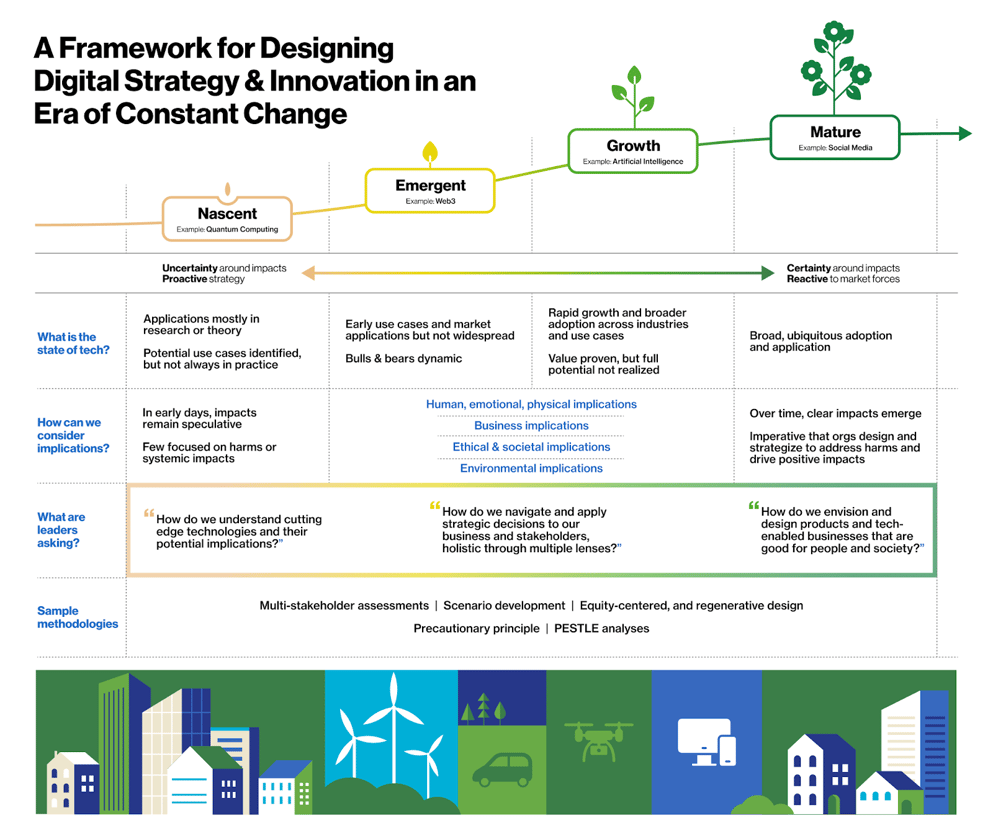in an era of constant change
Technology is everywhere — it impacts our work, lives, relationships, society, planet. Although we remain in the early days of the so-called “Information Age,” it is already clear that our modern technologies’ implications— both positive and negative — are vast. From social media to cryptocurrencies, from chatbots to robots, the promises and perils of our modern tools are the stuff of both fantasy and nightmare.
Compounding the challenges leaders face when navigating emerging technologies is that the data and tools themselves are constantly evolving, and converging with outside trends and forces. Consider, as one example, how the pandemic accelerated remote work, and the cascade of implications that had on workers’ lives; on business collaboration and cybersecurity; on the job market and our calculus for business travel…
Meanwhile, innovation itself is evolving: adding “digital” for digital’s sake is a recipe for failure. Instead, leading innovators think in terms of design, applying myriad technologies to address societal issues and unlock value in novel ways.
How do we harness new technologies in a way that supports our organization’s objectives, but avoids a world of unintended consequences– for our customers, partners, society, or the planet?
Underlying this question are a myriad of stakeholder dynamics that ultimately inform how digital innovation decisions are made: cultural questions and power structures, siloed teams and disjointed goals, appetite for disruption and incentive to see beyond “business as usual.”
To get to the heart of these questions, Intentional Futures helps organizations analyze technological impacts across a maturity curve, in which the adoption and proliferation of the technology influences the approach to research, strategy, and development.

Organizations face disruption from countless technologies across these four phases, and often struggle to understand how any one technology applies to their business forecast. Rooting our methodology with clients in the maturity curve not only helps them evaluate technologies in context, but ensures a more holistic understanding, strategy, and approach to design.
.gif?width=993&height=262&name=640a20b36ff2455d9bc54d95_DSI%20Question%201%20(1).gif)



These are the sorts of questions we’ve partnered with clients to explore. We’ve guided clients through learning and discovery exercises on more than 30 different technologies. Our team of researchers, strategists, and technologists have helped organizations develop ecosystem analyses, “future of” reports, coherent strategies, and journey maps across dozens of industries. We partner closely with innovation leaders to envision new futures, through a range of methodologies.
Innovation requires iteration. And amidst the systemic complexities and uncertainties of our times, it requires new approaches, outside-in provocations, and internalizing so-called externalities. If you’re ready to think differently about your organization’s digital strategy and innovation, reach out. We’ll help you navigate the future by harnessing data and modern technologies to design and disrupt for better.
